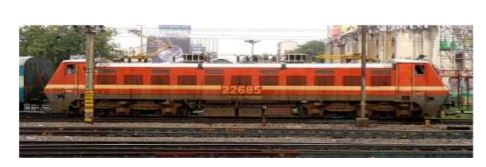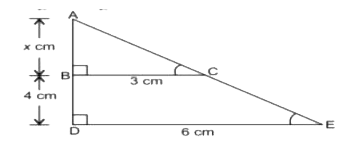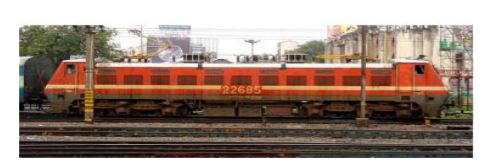Tooth-shaped scales are
Cycloid
Ctenoid
Ganoid
Placoid
The correct Answer is:D
Step by step video, text & image solution for Tooth-shaped scales are by Biology experts to help you in doubts & scoring excellent marks in Class 12 exams.
Topper's Solved these Questions
- BOOK - DINESH PUBLICATIONCHAPTER - VERTEBRATA-AGNATHA AND PISCESEXERCISE - Check Your Grasp9videos
VERTEBRATA-AGNATHA AND PISCES
- BOOK - DINESH PUBLICATIONCHAPTER - VERTEBRATA-AGNATHA AND PISCESEXERCISE - Check Your Grasp9videos
VERTEBRATA-AGNATHA AND PISCES
- BOOK - DINESH PUBLICATIONCHAPTER - TRANSPORT IN PLANTSEXERCISE - CHECK YOUR GRASP22videos
TRANSPORT IN PLANTS
- BOOK - DINESH PUBLICATIONCHAPTER - VIRUSES VIROIDS AND PRIONSEXERCISE - CYG13videos
VIRUSES VIROIDS AND PRIONS
Similar Questions
A scale drawing of an object is the same shape at the object but a different size. The scale of a drawing is a comparison of the length used on a drawing to the length it represents. The scale is written as a ratio. The ratio of two corresponding sides in similar figures is called the scale factor.
Scale factor= length in image / corresponding length in object.
If one shape can become another using revising, then the shapes are similar. Hence, two shapes are similar when one can become the other after a resize, flip, slide or turn. In the photograph below showing the side view of a train engine. Scale factor is 1:200.

This means that a length of 1 cm on the photograph above corresponds to a length of 200cm or 2 m, of the actual engine. The scale can also be written as the ratio of two lengths.
If two similar triangles have a scale factor 5:3 which statement regarding the two triangles is true?View SolutionA scale drawing of an object is the same shape at the object but a different size. The scale of a drawing is a comparison of the length used on a drawing to the length it represents. The scale is written as a ratio. The ratio of two corresponding sides in similar figures is called the scale factor.
Scale factor= length in image / corresponding length in object.
If one shape can become another using revising, then the shapes are similar. Hence, two shapes are similar when one can become the other after a resize, flip, slide or turn. In the photograph below showing the side view of a train engine. Scale factor is 1:200.

This means that a length of 1 cm on the photograph above corresponds to a length of 200cm or 2 m, of the actual engine. The scale can also be written as the ratio of two lengths.
What is the actual width of the door if the width of the door in photograph is 0.35cm?View Solution
Knowledge Check
- Question 1 - Select One
Tooth-shaped scales are
ACycloidBCtenoidCGanoidDPlacoid - Question 2 - Select One
Tooth brush bristles are made up of
ArayonBnylon - 66CdacronDAll of these - Question 3 - Select One
What are not true?
a. Dermal scales of fishes form the exoskeleton
b. cycloid and ctenoid scales have distinct lines of growth which aid in determining the age of the fish.
c. Fish scales are never shed.
d. The skin in elasmobranchs is covered with placoid scales.
e. The development of a placoid sale is not like the development of a toothAa,b,c and eBb,cand eCc,d and eDonly e
A scale drawing of an object is the same shape at the object but a different size. The scale of a drawing is a comparison of the length used on a drawing to the length it represents. The scale is written as a ratio. The ratio of two corresponding sides in similar figures is called the scale factor.
Scale factor= length in image / corresponding length in object.
If one shape can become another using revising, then the shapes are similar. Hence, two shapes are similar when one can become the other after a resize, flip, slide or turn. In the photograph below showing the side view of a train engine. Scale factor is 1:200.

This means that a length of 1 cm on the photograph above corresponds to a length of 200cm or 2 m, of the actual engine. The scale can also be written as the ratio of two lengths.
The length of AB in the given figure:
 View Solution
View SolutionA scale drawing of an object is the same shape at the object but a different size. The scale of a drawing is a comparison of the length used on a drawing to the length it represents. The scale is written as a ratio. The ratio of two corresponding sides in similar figures is called the scale factor.
Scale factor= length in image / corresponding length in object.
If one shape can become another using revising, then the shapes are similar. Hence, two shapes are similar when one can become the other after a resize, flip, slide or turn. In the photograph below showing the side view of a train engine. Scale factor is 1:200.

This means that a length of 1 cm on the photograph above corresponds to a length of 200cm or 2 m, of the actual engine. The scale can also be written as the ratio of two lengths.
If the length of the model is 11cm, then the overall length of theengine in the photograph above, including the couplings(mechanism used to connect) is:View SolutionA scale drawing of an object is the same shape at the object but a different size. The scale of a drawing is a comparison of the length used on a drawing to the length it represents. The scale is written as a ratio. The ratio of two corresponding sides in similar figures is called the scale factor.
Scale factor= length in image / corresponding length in object.
If one shape can become another using revising, then the shapes are similar. Hence, two shapes are similar when one can become the other after a resize, flip, slide or turn. In the photograph below showing the side view of a train engine. Scale factor is 1:200.

This means that a length of 1 cm on the photograph above corresponds to a length of 200cm or 2 m, of the actual engine. The scale can also be written as the ratio of two lengths.
What will affect the similarity of any two polygons?View SolutionPear- shaped head sharply separated from rest of the body and coverd with small scales is a feature of
View SolutionTooth enamel is made up of:
View Solution

